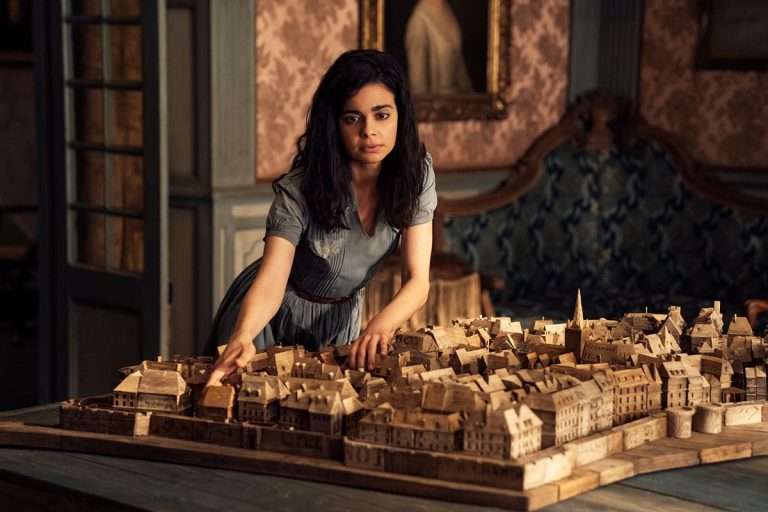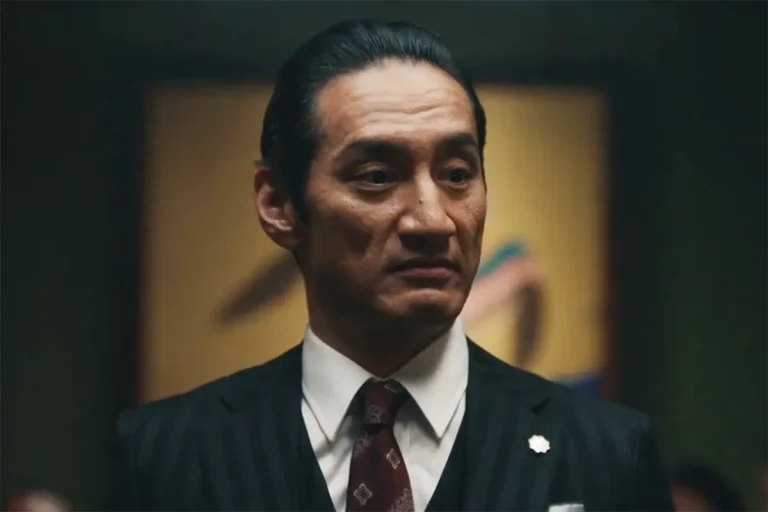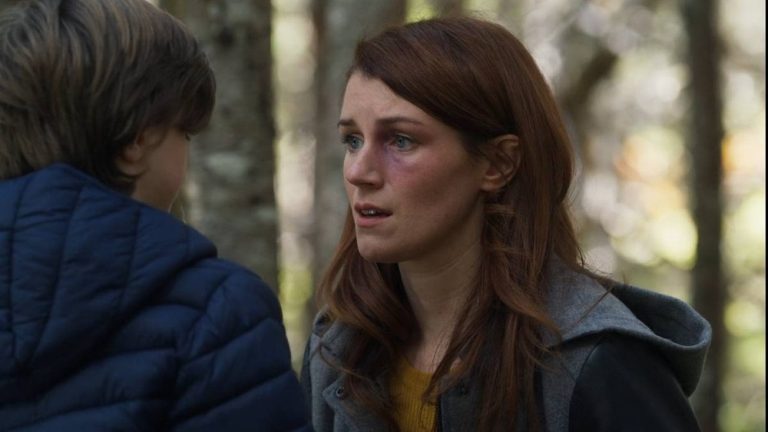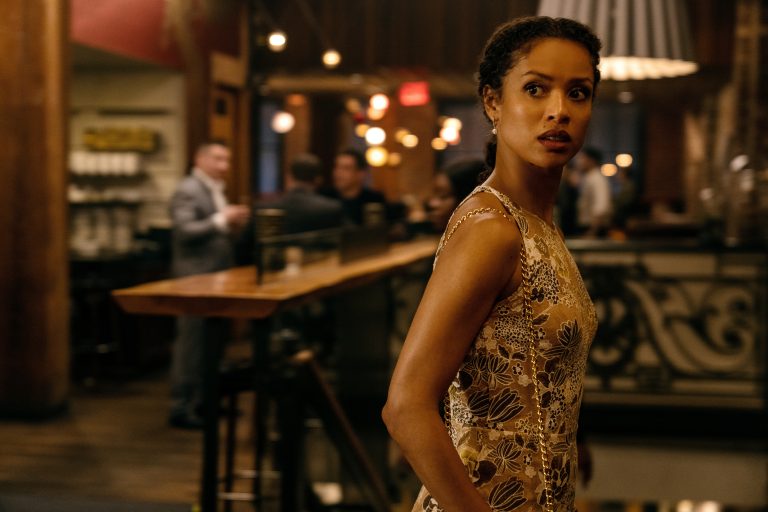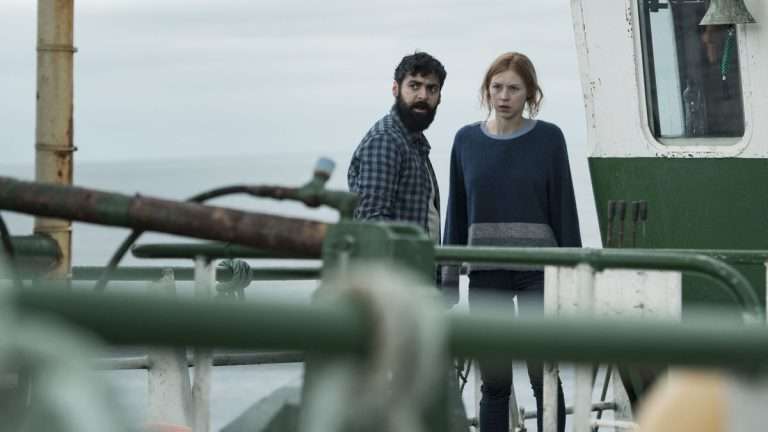‘Three of Us’ Is A Poetic Ode to Memories: “Irrfan Khan’s character, ‘Robert,’ in the movie “Puzzle” (2018) poignantly says, “Life is messy. It doesn’t make any goddamn sense… Life’s just random. Everything’s random… There’s nothing we can do to control anything. But when you complete a puzzle, when you finish it, you know that you have made all the right choices. No matter how many wrong pieces you tried to fit into a wrong place, but at the very end, everything makes one perfect picture…”
This quote serves as a stark reminder that irrespective of our efforts to keep things under control, the fear of the unknown never ceases to haunt us, and life will always surprise us. People may move on, but the places remain, embodying memories. The central theme of remembrance and memory wraps up the story of Avinash Arun’s “Three of Us,” starring Shefali Shah, Jaideep Ahlawat, and Swanand Kirkire. The film explores the contours of coming back to where everything began, almost like a poetic ode to the beautiful memories made while growing up.
Shailaja Patankar (Shefali Shah), a middle-aged woman, has early-onset Dementia, which affects her memory. However, to the credit of Avinash Arun, the medical condition never takes center stage in the story. Only towards the denouement does the audience become totally aware of Shailaja’s condition. The story continues to tread on the thin line of what is remembered rather than what is forgotten, with the word “Yaad” or “Yaadein” hovering throughout the narrative.
The narrative technique of the movie can be likened to the concept of ‘Memory Citizenship’ by American critic Michael Rothberg. The audience and Shailaja’s husband (Swanand Kirkire) understand the past through her memories. As the pace of life reaches the highway of the rat race, one gets uprooted from where everything began. While memories remain intact, the past fades away. Amidst the hustle and bustle of Mumbai, Shailaja is reminded of her early adolescence in a small Konkan town. She wants to revisit her past before she forgets even her present.
Upon visiting her town with her husband, she feels a sense of familiarity, and tangible things like home, friends, school, and photographs help her blow away the thick layer of dust over memories she never forgot. The story written by Avinash Arun, Omkar Achyut Barve, and Arpita Chatterjee seamlessly weaves together the symbols that define both flowing time and stagnant memories.
Shailaja looks at an album of photos at her school teacher’s house, and the conversation on memories becomes even more emboldened. Her teacher recalls Shailaja’s happy-go-lucky, cheerful demeanor as a teen. In another instance, Shailaja revisits her dance class, and her dance teacher insists on her dancing to see ‘how much she remembers’; interestingly, she remembers all of it. Amidst fulfilling societal expectations and playing the roles of wife, mother, and employee, the true Shailaja is forgotten, and her old charm is lost. These scenes mesh with the idea expressed in Shirley Toulson’s poem ‘A Photograph,’ which starts with the line, “The cardboard shows me how it was.” People move on, situations change, and nothing remains the same. Perhaps change is the only constant. However, the ardent desire to go back to one’s roots remains forever.
Professor Marraine Hirsch, in her book “Family Frames: Photography, Narrative, and Postmemory,” delves into how tangible articles such as photographs and letters store memories and become a way of capturing the ever-moving time. The very idea can be extended to the movie, where memories don’t suffice for Shailaja; the physical touch and real view of the places, people, and things she longed for help her reclaim what she perhaps never lost.
During her retreat, Shailaja is extremely eager to meet her school friend, Pradeep Kamat (Jaideep Alahawat). Upon seeing each other after a long time, a specific memory is sparked but never spoken of until the very end. Shailaja’s return helps Pradeep ‘re-member’ his past and reignite the creator and artist within him. An exceptional line in Pradeep’s poem titled ‘Udgam’ meaning ‘origin’ that he writes post Shailaja’s arrival translates to “Tomorrow will only come when today is played,” making “Three of Us” an ode to living in the present yet remembering the past. In fact, the cross sections of language and memory intertwine in this poetic movie.
The concept of ‘Collective Memory,’ coined by French Philosopher Maurice Halbwachs, can very well be applied to one of the scenes in the movie where Shailaja, Pradeep, and a few of their friends revisit their school and enter a classroom. Each one in the group remembers something different about the class and exhibits different emotions. Pradeep talks about the fact that the benches didn’t seem so small in childhood because a child’s heart is very big. A significant line written by Varun Grover and Shoaib Zulfi Nazeer reminds us that, as children, our needs are extremely minimal; hence, small spaces don’t constrict us. However, as we grow up, our needs seem to become endless. The feeling of having nothing despite everything colors our ability to be content. The director’s ability to pack numerous messages into limited time and words makes the film even more introspective.
When the friends engage in a funny banter to guess which standard the classroom belongs to, Shailaja slowly moves towards a bench, looks upon a scribbling, and confirms that it is the eighth class. This can be referred to as Hirsch’s idea of perpetuating memories through tangible objects that stay long after the memory is gone.
In one of the film posters, a fading image of a Ferris wheel is superimposed on Shailaja’s face. While the actual Ferris wheel appears later, the symbol stays on. The Ferris wheel, often associated with merriment and joy, takes on a more profound meaning when juxtaposed with Shailaja’s fading memory. The clock is ticking for her, and as she says to her husband before visiting her village, ‘Isse pehle ki kuch yaad na rahe, ek baar waha jana chahti hu’ (“I want to go once before I don’t remember anything”). The Wheel also symbolizes the circularity of life and how everything returns to the point from where it started.
One of the movie’s most important scenes unfolds on the Ferris wheel. Pradeep and Shailaja decide to take the ride together, and all the silences between them translate into expressions that were left unsaid for years. Both recall the last time they met 28 years ago at the same fair. The bittersweet memories, unfortunate incidences, and perhaps the ‘messiness’ of life took the characters where they are now. As teardrops roll down her eyes, Shailaja confesses to Pradeep that she didn’t know that would be the last time they’d meet. Pradeep is happy that even after so many years, Shailaja remembered him.
The conversation feels like a warm hug yet likens a cloth shredded apart that can never be the same again. From a cinematic perspective, the scene is highly enriching as the Ferris wheel stops at a higher point, from where everything seems small. As if time has stopped, both Pradeep and Shailaja wish the wheel never moved. But just as they wrap up their unending conversation, the wheel starts moving, as if it waited for them to rekindle the love that never saw the light of the day.
One of the brilliant choices made by the director is the location. The movie moves from the cramped and constricting Mumbai house to an open, airy space in Konkan. The closeness to nature depicts how nature brings peace and serenity. In a scene, Shailaja can be seen moving toward the sea, enjoying the water, and rubbing her feet. Shirley Toulson’s poem also creates a similar image, and one of its lines says, “…And the sea, which appears to have changed less, Washed their terribly transient feet.” The movie and the poem transmit the message that while human beings have a limited time on earth, the sea is perennial and flows eternally, engulfing ages of memories.
The facets of time and its limitations are depicted through a dialogue by Pradeep’s wife, Sarika, who tells Shailaja how everyone indulges in procrastination and the excuses of not doing something that never seems to end. She goes on to appreciate Shailaja’s earnest effort to come back to her ‘Udgam’ before the frenzy of time overpowers everything.
“Three of Us” beautifully intertwines the complexities of memory, the passage of time, and the yearning to reconnect with one’s roots. The film’s poignant moments, symbolized by the Ferris wheel and the characters’ rediscovery of each other, leave an indelible mark on the viewer. Like the trending Punjabi reel song suggests, “Haye Ni Apa Fer Milange, Kade Na Kade Fer Milange” – “We’ll meet again at some point of time for sure,” echoing the timeless theme of reunion in the intricate tapestry of life.



